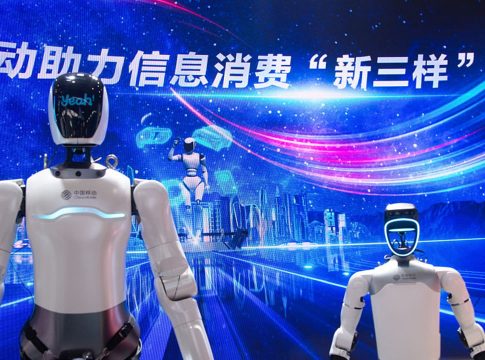The Future of Robotics: Auto Parts Suppliers Stand to Gain
As the world shifts toward advanced mobility solutions, including humanoid robots and electric vehicles, auto parts suppliers are strategically positioned for significant growth. According to a recent report from Morgan Stanley, these companies could be on the brink of a new boom, similar to what we saw with the rise of electric and smart cars.
Humanoid Robots: A New Frontier
Morgan Stanley analysts, led by Adam Jonas and team, predict that the burgeoning humanoid robot market will offer a major growth opportunity for auto parts suppliers. As companies like Tesla and Xpeng delve into humanoid technology, the demand for specific components—previously unrelated to traditional vehicle manufacturing—will increase.
In fact, it’s estimated that auto parts suppliers could capture 47% to 60% of the spending on materials and components for these robots, amounting to around $15,000 in production costs per humanoid. This opens a lucrative avenue for businesses already in the auto sector to pivot and adapt.
Key Players in the Market
Morgan Stanley has spotlighted three notable companies in this arena that are well-positioned to benefit:
-
Tuopu: This company manufactures actuators, crucial for mechanical movements in vehicles as well as humanoids. Despite lowering its price target due to softer Tesla orders, analysts foresee a potential upside of 39%. Actuator modules could define nearly half the cost of a humanoid, suggesting a growing market through 2030.
-
Sanhua: Upgraded from equal weight to overweight, Sanhua is expected to thrive as electric vehicle adoption rises. With a price target reflecting a 20% upside, they aim to capture significant market share in humanoid components. They’re mitigating geopolitical risks by setting up production in Thailand.
- Xusheng: With a modest price target of 12 yuan, Xusheng stands to see a rebound in revenue as electric vehicle production ramps up. Their involvement includes supplying structural parts for humanoids, although challenges still remain regarding their transition to robot components.
The Big Picture
By 2050, the humanoid robot market is projected to be worth a staggering $800 billion in China alone, reaching $5 trillion globally. As we stand at the edge of a transformative era, analysts emphasize the need for auto parts suppliers to adapt quickly. The transition won’t be without obstacles, especially considering ongoing U.S.-China tensions that could complicate operations and supply chains.
What Does This Mean for You?
If you’re an investor or someone considering a career in the automotive or robotics fields, keeping an eye on these developments is essential. The potential for major growth in humanoid robotics presents new opportunities that could reshape industries and create jobs.
While direct investments in specific auto parts suppliers carry risks, they may offer avenues for substantial returns as the market matures. Be sure to research thoroughly and consider diversifying your portfolio to capitalize on these emerging trends in technological mobility.
In summary, as we navigate this transformational landscape, those ready to embrace change will likely be the ones leading the charge into a new era of mobility.

Writes about personal finance, side hustles, gadgets, and tech innovation.
Bio: Priya specializes in making complex financial and tech topics easy to digest, with experience in fintech and consumer reviews.

